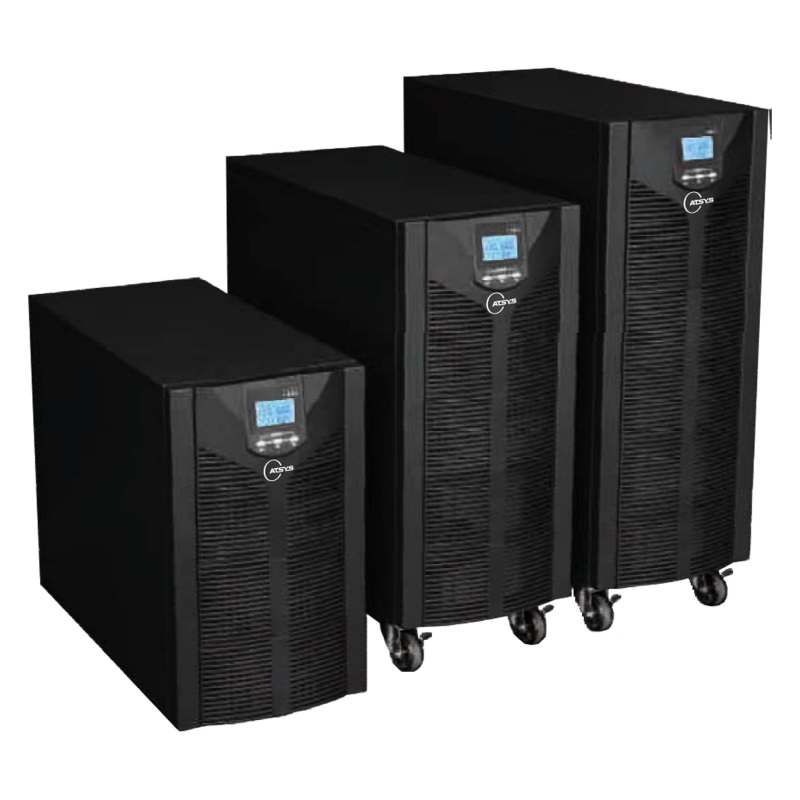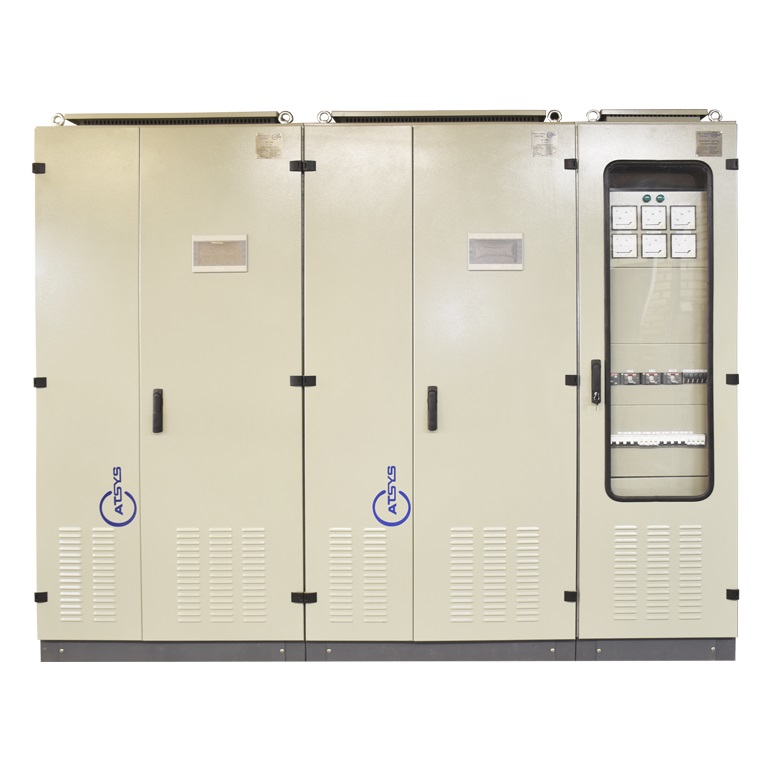UPS In Simple WORD
- During a power outage, the UPS uses the battery to create an “uninterruptible power supply”.
- Think about your laptop
- You can connect or disconnect the battery.
- Let’s say you only use it on your desk and keep it plugged in all the time and the battery is always charged unless the house power goes out (or your wife unplugs it to use the
- vacuum cleaner or the cord breaks). be
- Then, it is the battery that keeps your laptop on. If the electricity is connected, that’s great. If not, you can continue working until the battery is full and your laptop turns off.
- A UPS acts like your laptop battery and is always connected to what you want
- (such as CCTV cameras, medical devices, military or…)
- Some UPSs have the ability to connect to your computer and turn your computer off before the battery runs out.
- They use the term Shutdown, and this is one of the good features of Atsis UPS.
- Another duty of UPS is protection. City electricity is not healthy electricity, what does this mean?
- It means that city electricity carries a lot of noise and fluctuation, but UPS can protect your device against these risks (such as lightning or momentary voltage increase).
- If you live somewhere with multiple power outages or have an important piece of electronic equipment
- I suggest you buy an Etsys UPS
- to ease your mind from the possible damages of the city’s electricity
- How does UPS work?
- DC voltage of batteries to AC electricity (depending on the voltage of your place of residence
- In short, it means battery, battery charger and inverter
- The charger charges the battery, the inverter
- (110 V or 220 V) converts the battery, you know what it does!
continues…
Duties of UPS
Power Outage
Preventing power outages due to incidents such as lightning, cutting power transmission lines, overloading and natural disasters.
Power Sag
Among the other tasks of UPS is to prevent voltage drop by starting large loads, failure of generating equipment, insufficient consumption, in addition to damaging the equipment, it can also cause hardware failure.
Power Surge
Preventing the voltage jump to 110% of the normal state, the voltage jump is caused by a sudden decrease in the amount of electricity consumption, the shutdown of high-use equipment and supplies or a switch between the power generation source. The result of this mode is severe damage to the hardware.
Brownout
Preventing voltage reduction due to intentional reduction of voltage to supply electricity during peak hours by using high-consumption appliances outside the capacity of the power source.
Electrical Line Noise
Preventing electric current noise can be caused by radio or electromagnetic waves caused by transformers, welding devices or lightning.
High Voltage Spike
One of the other duties of UPS is to prevent high voltage shock caused by lightning and raise the voltage up to 6000 volts, for devices without UPS, it will definitely cause data loss and hardware damage.
Frequency Variation
Preventing frequency change is caused by disconnecting and connecting generators, changing frequency brings unpredictable results such as data loss, system locking and hardware failure.
Harmonic Distortion
Among other tasks of the UPS, preventing surges, switching power supply, variable-speed electric motors, copy and fax machines, or laser printers are examples of non-linear loads.
This phenomenon can cause communication disorders, device temperature increase or hardware failure. Designed for personal computers, central centers, medium computer networks, automatic doors, low-capacity medical and laboratory equipment, closed-circuit cameras, safety-protection equipment, etc.
Switching Transient
Prevention of transient change often happens shorter than high voltage shock and for a few nanoseconds.
When buying a UPS, you should pay attention to several important parameters, some of which are:
1- Input and output voltage and frequency range:The higher the range of input voltage and frequency,
It shows the ability of UPS to solve the mentioned problems of urban electricity, and the closer the output frequency is to 50 Hz and has less tolerance, the UPS will be closer to the whole idea.
2- Output waveform:
– Square waveform (UPS online)
– Pseudo-sine waveform (UPS line interactive)
– Sine wave form (UPS online)
In the case of low and medium power consumers and sensitive devices, square or pseudo-sine waves are acceptable to some extent.
For high power consumption and low noise sine waveform sensitive devices, it is necessary that their transfer and switch time from the city power to the inverter is zero.
3- active power:
It represents the maximum power produced by the UPS, which is based on W watts
4- Power factor (PF):
In an AC electrical system, it is a term that refers to the ratio of real power to apparent power and has a value between 0 and 1, and in fact, the power factor shows the efficiency and effective code. The higher the power factor, the higher the efficiency.
5- Support period (BACK UP TIME):
The required time is for the situation where the city electricity is cut off and it is necessary to use the energy stored in the battery to feed the load, and depending on the amount of time desired, the UPS may be an internal or external battery with a battery cabinet.
6- Size and weight:
- The size and volume of the device is important based on the place of use and transportation and services.
- Some special features that a UPS should have:
- Ability to work with a generator
- It has low volume and weight
- Equipped with a special terminal to connect to the battery cabinet
- Equipped with a test button to know the health of the battery
- Equipped with an intelligent RS232 communication port
- Possibility to add UPS DEVICE MANAGER like SNMP CORD
- Equipped with intelligent microprocessor control
- Equipped with switching charger
- Correction of input power factor (PFC)
Based on the features of the UPS and the type of application and type of consumption, different types of UPS are used as follows:
| OFF-LINE UPS | LINE-INTERACTIVE UPS |
ON LINE UPS |
| Home and industrial automation | Network company computers | Medical devices and equipment |
| POS Device | Security systems and cameras | industrial automation |
| Emergency lighting | Lighting systems | IT network of large companies |
| Home Pc | Industrial and home automation | Sensitive industrial applications |





Leave A Comment